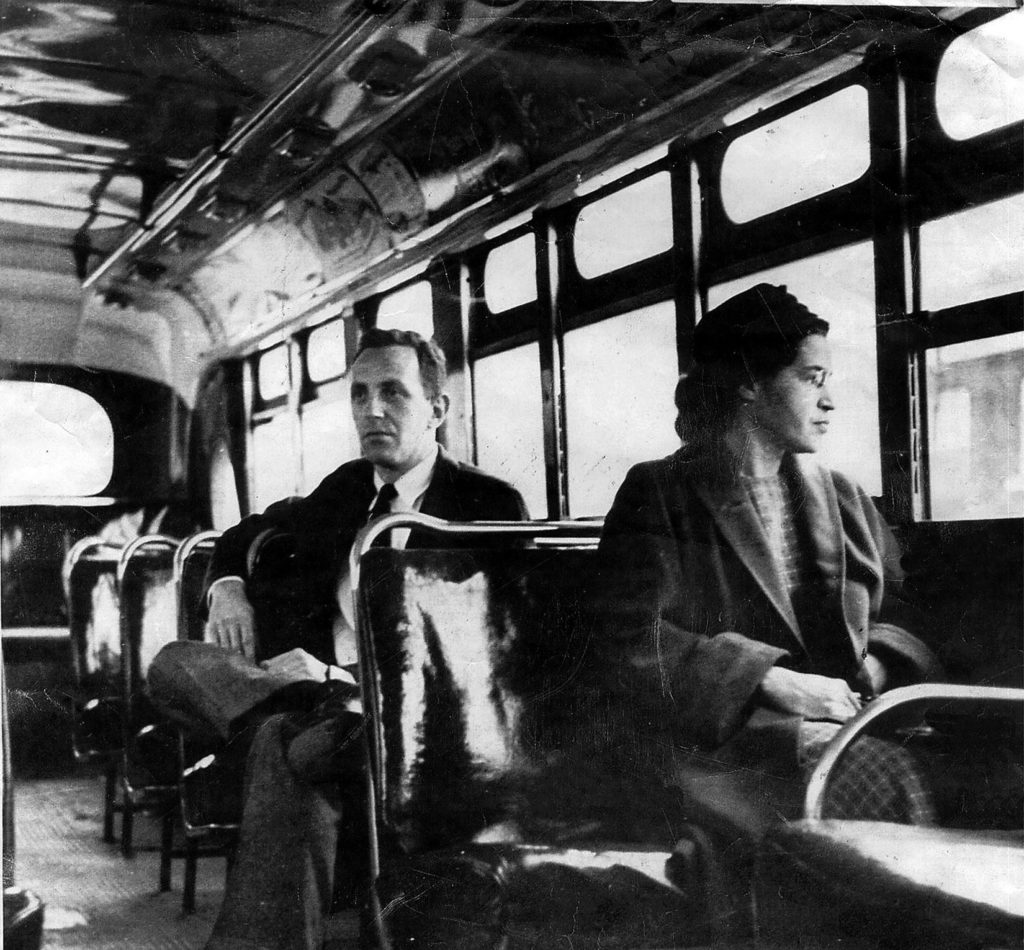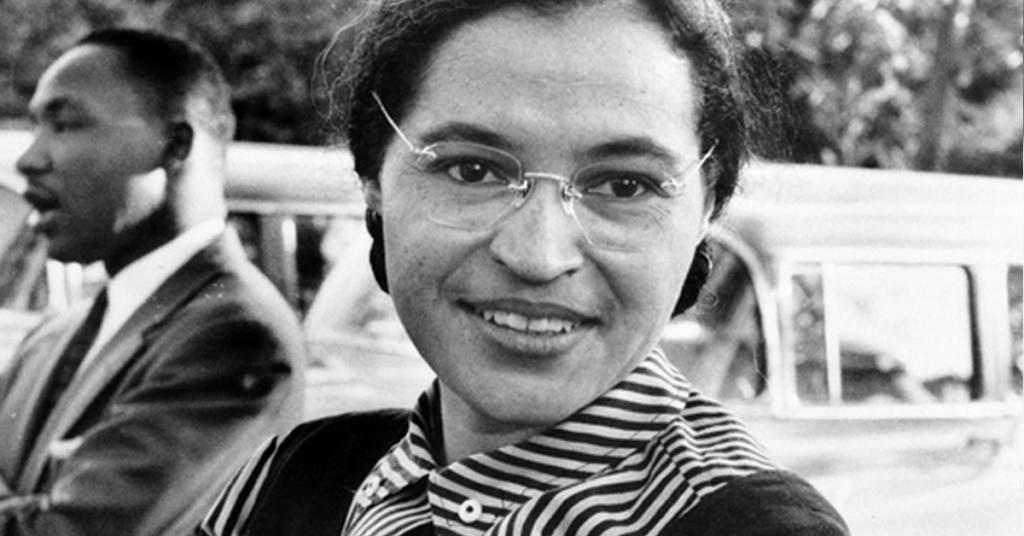Sit-in anniversary to be marked in Montgomery

An event next week will honor university students who led a 1960 sit-in at a whites-only courthouse lunch counter. Alabama State University said in a news release that resolutions by the Montgomery City Council and Montgomery County Commission that acknowledge the “wrongs from the past” will be presented Monday to the university president. The students from the historically black university on Feb. 25, 1960 staged a sit-in at the whites-only lunch counter at the Montgomery County Courthouse. It was the first known sit-in in Alabama to defy segregation laws. The students were arrested and prosecuted. The event is being held on the 59th anniversary of the protest. Republished with permission from the Associated Press.
Alabama prison system ordered to report mental health segregation data

On Tuesday, U.S. District Judge Myron Thompson issued an order for the Alabama Department of Corrections (ADOC) to report how many inmates with mental illnesses have been placed in segregation units, The Associated Press reports. This comes when attorneys for inmates requested intervention after three suicides occurred in four weeks in state prisons. Thompson previously instructed state prisons not to isolate prisoners without extenuating circumstances after finding in 2017 that care for mentally ill inmates was “horrendously inadequate.” History of mental health issues in Alabama prisons The issue of mental health care in state prisons has been ongoing. In December 2018, Alabama prison officials stated that they were making “substantial progress” in increasing mental health staff and asked not to be held in contempt of court of an order requiring minimum levels of mental health staff. In a December filing, the ADOC wrote that Wexford Health Sources, the contractor hired to provide health care, had not been able to meet staffing targets but said “both are making all efforts to increase staffing as quickly as possible.” The letter continued, “In sum, the state is not contending that it has fulfilled every requirement of the staffing remedial order. But it has made in good faith all reasonable efforts to do so, and those efforts have resulted in substantial progress.” They claimed that a shortage of professionals available, especially in rural areas, has made staffing difficult. Lawyers for the inmates wrote “Defendants’ contempt is placing prisoners with serious mental-health needs at a substantial risk of serious harm every day. Their failures are most evident when looking at staffing levels for mental-health staff with advanced training, specifically psychiatrists, CRNPs, psychologists, and registered nurses.” In September of 2018, the Southern Poverty Law Center asked Judge Thompson to hold the ADOC in contempt. “Adequate staffing is critical to address the mental health needs and secure the safety of the prisoners in ADOC’s care,” said Maria Morris, senior supervising attorney at the SPLC. “Time and time again, ADOC has failed to meet court-ordered deadlines to fill essential staffing positions. We have no confidence that ADOC is doing all it can to hire enough staff to care for prisoners with mental illnesses. We are asking the court to rule ADOC in contempt for continuing to fail to meet these court-ordered deadlines.” This came after a warden testified in February 2018 after a mentally ill prisoner committed suicide.
RNC commemorates Rosa Parks and the Montgomery, Ala. bus boycott

Dec. 5 marks the 61st anniversary of the Montgomery, Ala. bus boycott, which began in the days following Rosa Parks‘ arrest after she refused to give up her bus seat to a white man, as was the custom for the time period in 1955. The boycott lasted 381 and garnering national attention and ultimately leading to the landmark 1956 U.S. Supreme Court ruling that outlawed segregation on public transportation. On Monday, the Republican National Committee (RNC) Co-Chair Sharon Day released a statement commemorating the anniversary of 1955-1956 boycott. “Rosa Parks’ courage on a Montgomery, Alabama bus in December 1955 helped fuel one of the great demonstrations for freedom and equality in our nation’s history,” Day wrote. “Her stand for human dignity and equality lit the spark of conscience in citizens across Montgomery, leading to a bus boycott which dealt a blow to injustice and drew national attention to the burgeoning civil rights movement. By refusing to take the bus, freedom-minded people across that city made a 381-day declaration that liberty was of infinitely greater importance than any convenience in getting where they had to go. Today we commemorate the Montgomery bus boycott, a bold act of conviction which helped put segregation to death and moved America one step closer to completely honoring the Declaration of Independence’s truism that “all men are created equal.”
Rosa Parks wouldn’t give up her seat on the bus, 61 years ago today

61 years ago today, on Dec. 1, 1955, while riding home from her job as a department-store seamstress Rosa Parks became a part of American history when she refused to give up her seat for a white man on a public bus in Montgomery, Ala. “Upon arrival the bus driver said he had a colored female sitting in the white section of the bus, and would not move back,” the responding police officers said in their report. The 42-year-old Parks was taken to the Montgomery jail where she was charged with violating the city’s segregation law. Her act of civil disobedience prompted a 381-day boycott of the Montgomery bus system organized by Martin Luther King Jr. that garnered national attention and ultimately led to the landmark 1956 U.S. Supreme Court ruling that outlawed segregation on public transportation. Affectionately deemed “the mother of the civil rights movement” Parks was often quoted as saying she refused to give up her seat that day because she was “tired.” Undeniably she was tired, though she later explained it was not physical fatigue alone, but also weariness of spirit that led her to stand her ground that fateful December Thursday. “People always say that I didn’t give up my seat because I was tired, but that isn’t true,” Parks said in her 1992 book, Rosa Parks: My Story. “I was not tired physically, or no more tired than I usually was at the end of a working day. I was not old, although some people have an image of me as being old then. I was 42. No, the only tired I was, was tired of giving in.” Parks remained in Montgomery until 1957, when she and her husband moved out of the state following unbearable harassment and death threats. She died in 2005 at the age of 92 and went on to become the 30th person Congress honored by having her coffin sit in the Capitol Rotunda in recognition of her contribution to advancing civil and human rights. She was the first woman accorded the privilege. “I have learned over the years that when one’s mind is made up, this diminishes fear; knowing what must be done does away with fear,” said Parks in the 2000 book Quiet Strength: the Faith, the Hope, and the Heart of a Woman Who Changed a Nation.
Tuskegee Airmen receive Congressional Gold Medal

Five members of the famed Tuskegee Airmen were honored with Congressional Gold Medals during a Veterans Day ceremony held at the National Warplane Museum on Friday. Since the American Revolution, Congress has commissioned gold medals as its highest expression of national appreciation for distinguished achievements and contributions. An act of Congress in 2006 secured the Congressional Gold Medal for all Tuskegee Experience participants from 1941 to 1949. Wallace C. Higgins and Herbert Thorpe were presented with medals at the ceremony. Thorpe also received a medal on behalf of his late brother, Richard Thorpe. Leland H. Pennington and Robert M. Johnson were also honored and their families received medals on their behalf. The Tuskegee Airmen were recruited into an Army Air Corps program called the “Tuskegee Experience” that trained Blacks to fly and maintain combat aircraft during World War II. They included pilots, navigators, bombardiers, maintenance and support staff, instructors, and all the personnel who kept the planes in the air. They trained as a segregated unit at an air base in Tuskegee, Ala. proving to the world that African-Americans could serve in roles beyond the mess hall or supply depot. The unit helped pave the way for desegregation of the military.
Birmingham delegation asks White House for civil rights national park

In the spring of 1963, the eyes of the world were fixed upon Birmingham as protesters took to the streets in mass marches, demanding an end to segregation. With time, their peaceful efforts ultimately broke the back of segregation and led to passage of the Civil Rights Act of 1964. Now, many of Alabama’s elected officials are endeavoring to have the Birmingham Civil Rights District designated a national park in an effort to preserve its legacy and tell the story of a critical chapter in America’s fight for equality. The Birmingham delegation, along with Mayor William Bell and Alabama 7th District U.S. Congresswoman Terri Sewell, traveled to Washington D.C. Thursday to meet with President Barack Obama‘s advisers to make the formal request for Obama to sign an executive order to make the designation. In March of this year, Sewell introduced legislation that would designate the district as a new National Historic Park, but Thursday’s efforts, if successful, would be a faster path to making that happen. “The establishment of a national park that honors Birmingham’s place in the history of the civil rights movement will also give us space to reflect on the many challenges we still face today,” said Mayor Bell. “The relevance of the events in Birmingham during the 1960s still speaks to every African-American today as we wrestle with equality, economic empowerment and social justice.” The Civil Rights District, designated by the city in 1992, covers a six-block area of downtown Birmingham where several significant events in the American Civil Rights Movement of the 1950s and 1960s took place. Ranging from Sixth to Second Avenue North, and from 15th to 19th Street in the heart of downtown Birmingham, the district includes the Birmingham Civil Rights Institute, Kelly Ingram Park, 16th Street Baptist Church, Alabama Jazz Hall of Fame, and the Fourth Avenue Business District.
New study reveals Alabama among the most educationally segregated states in America

A new national study reveals Alabama is among the most educationally segregated states in America, with many of its schoolchildren enrolled in high-poverty school districts, bordered by much more affluent neighbors. Birmingham has more than twice as many neighbors as the average school district, and of the 13 borders it shares with adjoining districts, six are included among the 50 most segregating in the country — more than any other district in America. The worst of these borders separate Birmingham from Vestavia Hills and Mountain Brook. Vestavia Hills and Mountain Brook, like most of Birmingham’s well-off neighbors, were formerly a part of the Jefferson County School District — the county school district near Birmingham — but Alabama law permits municipalities with 5,000 or more residents to form their own school districts, independent from larger county districts, and thus these cities seceded to form their own independent districts. These secessions established wealthy enclave districts that present a stark contrast to the rest of Birmingham. While the suburban neighbors have grown more populous and have prospered in recent decades, enrollment in Birmingham’s schools has plummeted, and its poverty rates have risen as better-off families have fled the district. In the 1999-2000 school year, Birmingham enrolled 38,120 students and had a 27 percent child poverty rate. Today it enrolls 24,858 students and has a 49 percent child poverty rate — seven times higher than Vestavia Hills and Mountain Brook, which both have poverty rates of just over six percent. Which is why a new report entitled “Fault Lines” from the nonprofit EdBuild ranks the Birmingham as the second and third most segregating school district borders in the country. “What we did is built an algorithm that identified all 33,500 school district borders in the country … and compared their school-aged child poverty rates,” said Rebecca Sibilia, the founder and CEO of EdBuild. Sibilia’s team compiled a list of the 50 most segregating school boundaries in the nation — the district borders with the largest difference in child poverty rates from one side to the other. In their report, “segregating” refers to social economic class rather than race, but the two often coincide in urban school districts. The study said 26 million children across the country live in high-poverty districts. “There is no doubt that low-income students are harmed by a system of borders that effectively quarantine them into underserved districts,” the study said. “America has permitted our schools to become a system anathema to our ideals, funding education in a manner that prevents a vast number of students from accessing an equal start in life.” It’s worth noting, Alabama is the only Southern state on the list, which Sibilia explains is because in much of the South, county borders do double-duty as school district borders, “and so there is less opportunity for intentional segregation.” Nevertheless, Birmingham is a prime example where students district border segregation results in greater educational opportunities for those who manage to live on the “right” side of these borders. The study revealed the borders separating these districts are effectively impenetrable to the neediest children from families with limited means, compounding the inequalities public education should be conquering. In effect, school district boundaries have become the new status quo for separate but unequal. Here’s a look at the top 10 most segregating school district boundaries — these neighboring school districts have some of the largest poverty differences in the country.
Hillary Clinton to speak at Montgomery bus boycott anniversary event

Democratic presidential candidate Hillary Clinton is traveling to Alabama to mark the 60th anniversary of the Montgomery Bus Boycott. Clinton will speak Tuesday morning at the Montgomery, Alabama, church pastored by the Rev. Martin Luther King Jr. during the boycott. Her speech falls on the anniversary of Rosa Parks‘ Dec. 1, 1955 arrest for refusing to give her bus seat to a white passenger. Her arrest sparked the 381-day boycott of Montgomery buses by blacks to protest segregated seating. In stops in the South, the Democratic presidential front-runner has been working to solidify her advantage among African-American voters. Black voters make up a major portion of the Democratic primary electorate in Southern states holding early primaries in 2016. Republished with permission of The Associated Press.


